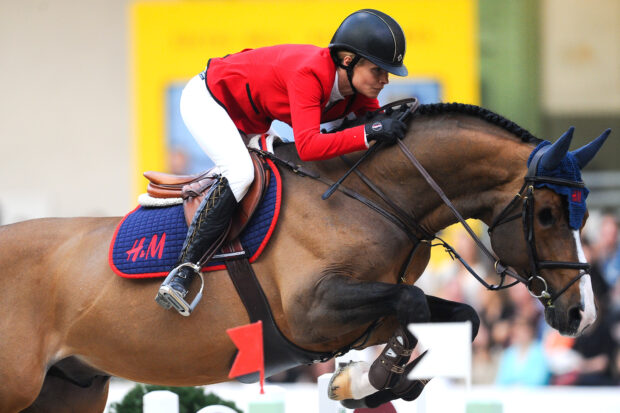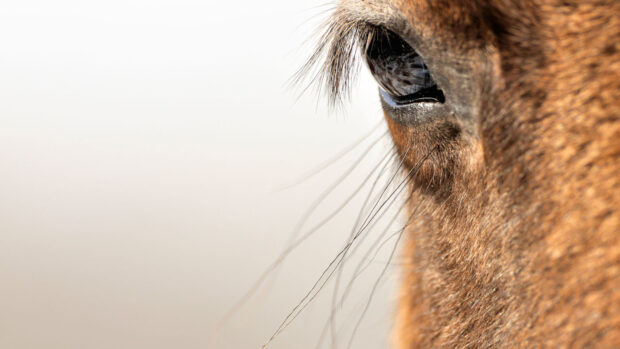Just how much a horse can see with each eye is extremely difficult to assess. Usually, a test is done with an obstacle course made up of boxes, buckets, brooms and bales of hay. It can be performed with one eye blindfolded, both in the semi-dark and in bright light.
Night vision is less effective in horses than in truly nocturnal animals. Colour vision is thought to be poor – yellow is reported to be the “best” colour for horses and red, green and blue less well-appreciated.
Gradual loss of vision in one eye is well tolerated by most horses and many give the impression that they are fullysighted. While this adaptability is good for the horse, it can make it difficult for a vet to diagnose.
Sudden, total loss of vision in both eyes, which can occur with retinal detachment or with brain trauma, is distressing. Affected horses often have a startled look, with wide-open eyes, dilated pupils and sharply pricked ears. They may overreact to sounds or touch and can be dangerous to handle.
How much can he see?
When a horse stands with its head held squarely on its neck it can see all around its body, except for a 1-2ø wedge starting behind the back of the head and a small area of the face, poll and ears – a slight movement of the head to either side is enough to allow the horse to see the missing wedge.
Peripheral vision may sometimes be less efficient and approaching objects can often startle some horses.
The horse has a limited field of stereoscopic or binocular vision in front of it. This is relatively small because the eyes are set in the side of the head and do not face directly forward.
Co-ordinated movement of the eyes is controlled with pinpoint accuracy by muscles attached to the eyeball, which are controlled by voluntary movement and reflex connections to the balance mechanisms in the middle ear.
The horse focuses through lens alterations and changes in the shape of the eyeball itself. Horses seldom miss their step and can often be seen to make tiny adjustments to foot placement in response to the going
Some horses have been shown to be short-sighted, but the full effect on the horse is not known but it may explain why some shy or hesitate in certain conditions.
Adjusting to light
The eye has to adjust to the available light, and the iris opens or closes to compensate for any changes. This is a complicated process involving several different nerve pathways. Response of the iris (pupil) to light does not necessarily mean that the horse can see.
The brain
The optic cortex area of the brain is responsible for vision and trauma to the back of the head can cause blindness, resulting from a failure of this area to recognise the signals coming from the eye.
Although the eyes can appear quite normal, the horse may be totally or partially blind. Signals are also sent from the optic pathways to other parts of the brain that control pupil diameter and balance.
Eye injuries/b>
Despite the eye’s prominence on the head, injuries are unusual, damage is more common on the eyelids because the head does not move as fast as the eyelids do to protect the eye.
A horse, which blinks if an open hand is suddenly shown to the eye, will probably have sight in that eye. If there is no blink, it is possible that the eye is not sighted or that the eyelids cannot respond.



